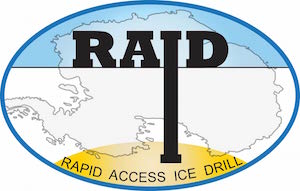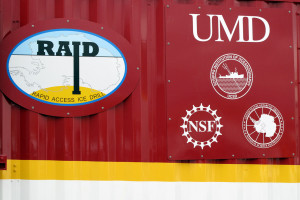As a research facility, the RAID drilling platform will be operated initially by the University of Minnesota. Management of the facility will be supervised by John Goodge and staff at the University, and operation and maintenance responsibilities will be the responsibility of contractors in cooperation with the USAP Antarctic Support Contract. Coordination of the facility with the outside research community will likely be established by a new RAID Science Coordination Office. The Ice Drilling Program provides technical partnerships and general advisory functions through the existing IDP Subglacial Access Working Group (SAWG) and the IDP Technical Assistance Board (TAB); SAWG serves as a bridge between RAID operations and the broader Antarctic science community, and the TAB provides expert feedback related to drill design and operation. A planned Site Selection Committee will be formed to make recommendations about drilling targets. Future rock and ice cores will be permanently archived at the U.S. Polar Rock Repository (USPRR) and NSF Ice Core Facility (ICF), respectively, and these two organizations will be responsible for archiving and lending sample material returned by RAID.
As a facility, RAID is principally concerned with the drilling platform itself, but the targeting of drilling sites and subsequent access to the boreholes for down-hole observation are an important part of achieving the interdisciplinary goals established for RAID. The acquisition of airborne and over-snow geophysical imaging (ice-penetrating radar, aeromagnetics, and aerogravity) is critical for reconnaissance mapping of potential targets of old ice and subglacial geology. Reconnaissance geophysical mapping therefore provides critical input for sensible site selection for RAID drilling, as well as for site safety surveys to determine subglacial conditions of ice thickness, basal layer composition, and presence of water. As a working science platform, use of RAID involves close cooperation with the geophysical community. Borehole logging, both in reconnaissance fashion at the time of drilling and for detailed, high-resolution records after drilling is complete, is a key part of making RAID boreholes available as a research observatory. Borehole data acquisition may include optical logging of ice stratigraphy, ice crystallographic anisotropy, borehole deformation, temperature profiles, basal heat flow, and bedrock orientation and in-situ stress.

